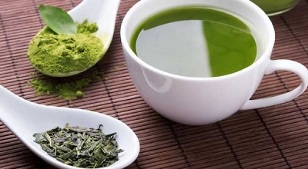The Japanese diet can be compared with a difficult exam, which requires you to show the samurai willpower to lose weight. After passing, not only the thinness is obvious, but also healthier. After reading the material, you will find many new things about "Japanese women".
Japanese weight loss diet

After you find excess weight on your body, you are immediately eager to choose a suitable weight loss plan. No salt in the Japanese diet is an effective way to lose weight.
The name of the Japanese diet comes from Japanese nutritionists. It is suitable for Europeans and has nothing to do with Japanese cuisine. However, it allows you to develop the correct eating habits inherent in Japanese residents.
The Japanese are known for their slim physique and long life span, in large part because they follow a diet.
Advantages and disadvantages of Japanese diet
Let us study the advantages and disadvantages of this diet in more detail. The 13-day Japanese diet has several benefits:
- is an effective weight loss option. According to this plan, you can lose 8 kg or more.
- Reducing salt intake has a positive effect: too much water leaves the body, reducing swelling. The cardiovascular system will gradually return to normal.
- Happiness has been significantly improved. Reducing the amount of salty food in the diet will help a person to get rid of this bad habit.
- Plant protein can keep you slim for a long time and strengthen your immune system.
- The Japanese food menu is a selection of affordable products that can be purchased in any supermarket.
- This weight loss process is relevant at any time of the year.
There are several reasons why this weight loss system is harmful:
- Drinking coffee every day can cause cardiovascular, central nervous system and gastrointestinal (central nervous system and gastrointestinal) problems.
- Unbalanced diet, very close to hunger strike.
- Taking a long rest before meals may be the starting point for serious stomach problems.
- Many people find it difficult to get used to eating.
The Japanese diet is one of the most famous ways to lose weight fast.
Basic rules of Japanese diet
Some rules for weight loss, such as a diet that can help improve figure and physical health:

- Eat strictly from the special menu;
- Consider fasting days in advance;
- Do not edit or change the order of items;
- Give up sweet, salty, and starchy foods (except permitted foods);
- Try to drink daily pure water (1. 5-2 liters, depending on your weight);
- Drink green tea after meals, because black tea is forbidden;
- Boil vegetables in a slow cooker or roast in the oven with olive oil;
- A similar diet is allowed to be repeated every six months;
- Need to take a variety of vitamins, active supplements, can make up for the lack of nutrients in the body;
- You need to consult an expert, because the nutritional system will produce side effects;
- Mental preparation is the key to the success of any diet. Japanese is no exception.
- Before starting, gradually exclude prohibited products from the menu, especially harmful products;
- The original flavors of vegetables and fruits will help cope with the desire to eat certain "harmful foods" and will increase the mood of dieters.
Must strictly abide by the menu, without changing the date sequence or product mix, and strictly follow the cooking rules.
Prepare Japanese food
We strongly recommend that you do not skip this step, because even if you decide to try Hayley Pomeroy's more gentle diet, sudden changes in diet can cause stress to anyone.
Here are some tips to help you rebuild your body in a new way and start losing weight:
- Eliminate all kinds of "harmful substances" (fried, sweets, flour, sauces, semi-finished products, instant foods) from the diet one week before the start of the diet;
- Take a smaller plate-this can reduce consumption by 20-25%;
- Don’t eat too much at night, eat dinner three hours before going to bed;
- Drink standard water (1. 5 to 2 liters per day);
- Sip your first glass of water in the morning to activate your metabolism after sleep.
7-day Japanese food menu
The Japanese salt-free diet 7 days a week includes three meals a day: breakfast, lunch and dinner. All beverages are sugar-free.
An example of a balanced diet every day:

- Start your breakfast with a cup of coffee or green tea. At lunch, boil 2 eggs, chop Beijing cabbage salad, carrots, and season with vegetable oil. Then drink 1 cup of freshly prepared tomato juice. Dinner includes boiled fish (150-200 grams), 100 grams of cabbage and a spoonful of olive oil.
- Start your first meal with a meal of rye bread and coffee/tea. Lunch includes vegetable salad, grilled fish (200g). For dinner, cook a small piece of beef (200 grams) + a cup of low-fat kefir.
- Natural unpackaged coffee-breakfast. Boil a bowl of boiled eggs for lunch, cut carrot salad (small portions weighing 150 grams), and season with vegetable oil. Have some apple snacks at the end of the day.
- For breakfast, in addition to a cup of coffee, you can also bake a slice of rye bread. The second meal includes an egg, 3 medium carrots, and 10 grams of natural low-fat cheese. At night, eat the fruits allowed on the menu.
- For breakfast, grated carrots and season with lemon wedges. Grilled fish fillets for lunch. Squeeze a glass of juice from the tomatoes. Dinner includes 2-3 kinds of unsweetened fruits (such as pears).
- Drink a cup of weak green tea every morning. For lunch, cook 300 grams of chicken breast, thinly sliced carrot and cabbage salad (150 grams). Dinner-2 hard boiled eggs, carrot salad and a drop of oil.
- Rye bread and a cup of tea can be used as breakfast. Lunch includes a small piece of cooked beef (200 grams) and an apple. Dinner-any suggestions (no beef).
The 7-day Japanese diet and menu mentioned above cannot guarantee a significant weight loss. During this period, you can only remove excess water from the body.
This kind of diet can be accurately called a salt-free diet, because you drink a lot of alcohol and don’t eat salty foods, so you can actually wash off kilograms.
9-day Japanese food menu
The weight loss meal below is no different from the 7-day choice, but two more days have been added:
- Drink sugar-free coffee/green tea at breakfast. The second meal-500 grams of boiled chicken, a bowl of cabbage and carrot salad. Dinner will include grated carrots flavored with sesame oil.
- Start the day with the usual drinks. Lunch snacks include boiled chicken fillet (150g), carrots and Beijing salad, and 2 eggs. Eat 2 permitted fruits at night.
13-day Japanese food menu
The Japanese food menu has been added for a few days:

- In the morning, cheer up with a cup of coffee. The lunchtime diet includes: a slice of cheese (10 grams), a boiled egg, a salad of shredded carrots, and cabbage. Have a snack on the "right" fruit for dinner.
- Early in the day-rye toast and green tea. At lunch, saute zucchini with olive oil. Dinner includes two hard-boiled eggs, a cabbage salad seasoned with lemon wedges and butter, and boiled veal (150-200 grams).
- A cup of coffee and toast at breakfast. The second meal is 200 grams of fish (cooked or made in a slow cooker), mixed with salad. Cook a slice of beef for dinner. Go to the supermarket to buy fresh kefir.
- After waking up-a cup of coffee. The daily diet includes a pair of hard-boiled eggs (150 grams). Cabbage salad. For dinner, fried or boiled 200-300 grams of fish fillets.
- Starting from the next day, you must select any day’s menu and add 1 prohibited product. It is important to gradually get rid of the two-week diet and not to uncontrollably absorb foods that were previously forbidden.
Fish, chicken, beef, eggs, cheese and kefir should be the basis of your menu.
If you have a sweet tooth, you can smell vanilla during your diet. It will reduce the urge to spread out and eat sweet bread.
- Breakfast, cooking porridge (buckwheat, oatmeal) in water;
- You can eat rice and meat for lunch;
- Introduce protein and vegetable snacks into your diet;
- Gradually season the vegetable salt and pepper;
- The withdrawal time from this diet lasts about 4 weeks, so be patient.
Japanese diet food list
As part of this diet, it is necessary to eat low-fat, low-carbohydrate natural products:

- Natural grains or coffee powder (accelerate the metabolic process in the body and normalize blood pressure);
- White fish (only cattle lo), because red fish is too greasy;
- Green tea (natural no fruit additives);
- Fresh fruits (bananas and grapes are high in sugar). Give preference to green apples, pears, grapefruits and cherries with a "sour" taste. You can drink cocktails or smoothies;
- Lean meat (beef, veal);
- Your homemade tomato juice in a blender. The store sells drinks containing a lot of salt;
- low-fat (or no fat) fresh kefir;
- chicken or quail eggs;
- Chicken (sirloin), turkey;
- Vegetable oil (olive oil or sesame oil);
- Still mineral water;
- Vegetables (preferably Chinese cabbage, eggplant, zucchini, carrots);
- Rye bread or croutons.
Forget about salt, sugar, condiments (they will make you eat more than you need for hunger), and leave smoked meat, baked goods, bananas and grapes in the store.
List of prohibited foods in Japan
Foods that should not be eaten are listed in diet foods.
In order to lose weight, you must give up the following positions:
- It is not recommended to add spices and herbs. Salt is strictly prohibited.
- Don't drink alcohol while losing weight. They themselves are high-calorie products.
- Eliminate flour, sweets and high-fat foods in your diet.
- As mentioned above, avoid eating two fruits (bananas and grapes) that are high in sugar.
Results

In such a short period of time (13 days), you can walk up to 15 kg (depending on the duration of the course and the initial weight). Of course, if you follow all the instructions, please do not replace the product, please strictly follow the established daily work.
Please note that after 13 days in a balanced Japanese diet, the menu will help improve metabolism, so weight loss will continue after the end. Drinking plenty of water will improve the appearance of the skin and eliminate puffiness.
During the diet, snacks and any deviation from the recommended menu are strictly prohibited, otherwise the result will be far from the promise.
Contraindications
Japanese diet is a difficult choice to improve graphics parameters, so it is not suitable for everyone. It should be noted again that before dieting, you should consult a nutritionist.
The following is a list of prohibited factors for "Japanese women":
- Taboo during pregnancy and breastfeeding;
- Adolescents (under 18), the elderly should not restrict diet;
- Immune system is generally weakened, colds, SARS, flu;
- Not acceptable for people with chronic diseases (cardiovascular, intestinal, kidney disease);
- Violation of stool, nausea;
- Postoperative period (not related to the severity of surgery);
- Mental, physical, emotional stress (for example, upcoming competitions, competitions, report submission);
- If you feel weak and dizzy a few days after starting a diet, then you should refuse it.
We have analyzed the peculiarities of the Japanese diet for a week or longer. These food systems are mainly fresh vegetables, fruits (mainly fish), moderate edible fats, fermented dairy products, and salt. It can be considered that this is the key to Japanese longevity and harmony.




























